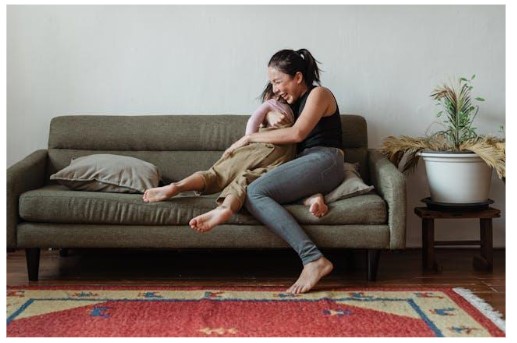The Importance of Color when Applying Makeup
by: Shannon Gardner
Before you start to work on different makeup looks, you need to know how different colors work.
Here is will go over the basics of the color wheel and then I will talk a bit about eye makeup and skin tones.
Here we go……
The Basics
You see seven basic colors when a ray of light is passed through a prism. The color wheel was created in the 20th century by Johannes Itten. It shows the primary, secondary and tertiary colors.
DIFFERENT KINDS OF COLORS
There are three basic colors, red, blue and yellow that are known as the primary colors. They cannot be created from other colors. Other colors are derived from one or more of the primary colors.
Primary colors:
Blue – is cool and is the strongest color.
Red – is warm and adds fullness.
Yellow – is warm & cool and is the weakest.

Secondary Colors
Secondary colors are a mix of two primary colors in equal proportions.
Examples:
Yellow + Red = Orange
Red + Blue = Purple
Yellow + Blue = Green

Tertiary/Intermediate Colors
Tertiary colors are a mix of primary colors with a secondary color next to it on the color wheel. The name of tertiary colors may be two color names. Example would be yellowed brown. This is yellow that has been added to brown.

Complementary Colors
Complementary colors are those that are right opposite each other on the color wheel.
In facial makeup, complementary colors have the best effect when used on different areas rather than when placed right next to each other.

Analogous Colors
Analogous colors are right next to each other on the color wheel. These colors generally fall in the same family and harmonize well.
You will find that a lot of eye palettes are put together with these colors.

Yellow, red and orange are the warm colors and blue, violet and green are the cool colors.
Colors that have yellow/red/orange undertones are warm. They bring attention to the area of the face they are applied to.
Colors that have blue/violet/green undertones are cool and tend to give you an understated look.
To cover imperfections on the face, you would use blue, violet or green concealer. Blue concealer can be used on tanned skin, violet/purple concealer on yellow areas and green concealer on red areas.
USING THE COLOR WHEEL
There are four properties that describe the color’s basic characteristic.
They are:
Hue – The true color of the primary, secondary or tertiary colors you have mixed. In other words, a hue is one of the twelve colors on the color wheel.
You can very the brightness and density by adding black, white or grey to these colors. If you need pastel shades or muted colors for your makeup, then this is how you get them.
Tone – Adding gray to a pure hue gives you a toned color. You would not use this extensively while applying makeup, but you would use this for corrections.
Shade – A pure hue plus black gives you a deeper, richer color. Example would be – add black to red to get a deeper, rich red.
Tint – When you add white to a pure hue, you tint it. Example would be – Adding white to purple would change it to lavender.
Tip for you….
Before you pick out a color to use in your makeup, take into consideration you eye color and skin tone. Of course, what clothing you wear should be factored in as well. That doesn’t mean that your eye shadow should match your clothes. But keep your eye shadow and clothes in the same color family or complimentary family.
5 EYE MAKEUP TIPS
1.Pick shades that contrast with your eye color. Avoid colors that match your eyes.
2. Dark colors will make your eyes appear smaller while lighter shades make them look bigger.
3. During the day stick with natural looks and matte shades. Evening time is the perfect time to use dark shades and sparkle.
4. If you want to make your eyes pop, use complementary colors. For example: green eyes with pink tones are a perfect way to grab attention.
5. Don’t match your eye makeup to your clothes. Not a good look.
CHOOSING THE RIGHT COLORS FOR YOUR SKIN TONE
Keep in mind that what looks good on one woman may not look good on another. And the reason for that is “skin tone”. The undertones of your skin has an affect on how makeup colors look on your face.
Here is a quick glance at undertones:
Fair Skin – yellow, gold, reddish or rosy, pale peach, pale pink
Olive Skin – yellow, yellow-orange, yellow-red
Dark Skin – red, red-brown, blue, blue-black, ebony, orange-brown
It is important that when choosing a foundation that you start with one that blends in with the rest of your skin. When trying to figure out which shade to choose, take three shades that you “think” are correct and apply them directly underneath each other on your cheekbone. The one that blends in with your face is the correct color. Are you active in sports or outdoors? Then maybe skip the foundation and try a tinted moisturizer.
Women with fair skin can wear a shade warmer than their skin tone. Blue-reds and pinks are perfect for the lips. Fair skinned women should avoid vibrant colors on the cheeks. To get the dramatic look, use dark colors, but make sure to take all of your makeup into consideration.
Women with olive skin can wear bronze shades and bright colors. They can even add a little bronzer over the cheekbone/brow bone areas. Gold, coral, orange-reds are perfect for the lips. To get a bold look, they should do lighter and darker shades.
Women with dark skin should avoid pale shades and choose burgundy or red-browns. For the lips they should choose purple, mahogany or shades of brown. Need to be careful when choosing bright colors because they can appear too vivid to present a cohesively make up look.
Would you like help in finding what shades of eye shadow and/or foundation you should be wearing? Message me here >>> m.me/BeautyWithShannon2016 and I will work with you on finding the right shades for you. 😊
More ways to connect with me:

Shannon Gardner
Makeup Mentor
Facebook – https://www.facebook.com/BeautyWithShannon2016/
VIP Group – https://www.facebook.com/groups/ShannonGardner
Comments are closed.




This is such good information to know. I always feel like I need to “match” my clothes when choosing a lipstick color. Thanks for putting this out there!
Wow this was super helpful! Thank you!
Very helpful, I didn’t know what colors best fit my face. I’ll be saving this for future reference.